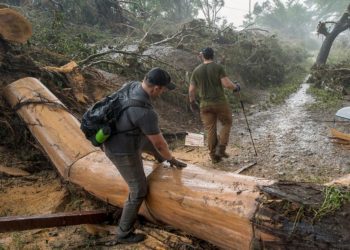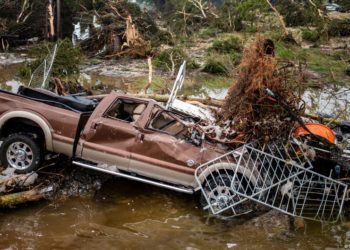Quick action by one Texas summer camp leads to timely evacuations ahead of deadly flood
It was about 1 a.m. on the Fourth of July when the facilities manager at a central Texas summer camp...
Kelly Osbourne Gets Engaged At Dad Ozzy’s Last Black Sabbath Show
It was a great weekend for the Osbourne family. Kelly Osbourne got engaged to Slipknot rockstar Sid Wilson on Saturday...
It’s time to end the WHO’s secret grip on American health care
It’s common sense: Local challenges should be confronted and solved locally whenever possible. Protecting Americans’ health is no exception. Yet...
Texas flood death toll jumps to 78 as search intensifies
The death toll from flash floods in the US state of jumped to at least 78 people on Sunday as the...
Experts Question If Weather Service Was Operating at Its Best Ahead of Texas Floods Amid Trump’s Cuts
Texan communities are dealing with the impact of the deadly flash floods along the Guadalupe River, which have killed at...
Scarlett Johansson Got “Long Email” From Bryce Dallas Howard Welcoming Her To “Jurassic Family”
With her latest blockbuster franchise, Scarlett Johansson had some support from her predecessor. The 2x Oscar nominee revealed that Jurassic...
NYC voters torn over Zohran Mamdani’s big plans to hike taxes on wealthy, corporations: poll
Democratic mayoral nominee Zohran Mamdani’s plans to hike taxes on corporations and wealthy New Yorkers has general election voters split,...
Eagles Vet Reveals Truth About Jalen Hurts, AJ Brown Duo
As the Philadelphia Eagles’ passing game was under a microscope, a popular narrative suggested that Jalen Hurts and AJ Brown...
New details emerge on Gaza ceasefire proposal as Netanyahu heads to the White House
DEIR AL-BALAH, Gaza Strip (AP) — New details of the ceasefire proposal emerged on Sunday as Israel sent a ahead...
Mystery deepens as body discovered during search for missing American in island paradise
NEWYou can now listen to Fox News articles! Police in the Turks and Caicos Islands have discovered the body of...

















